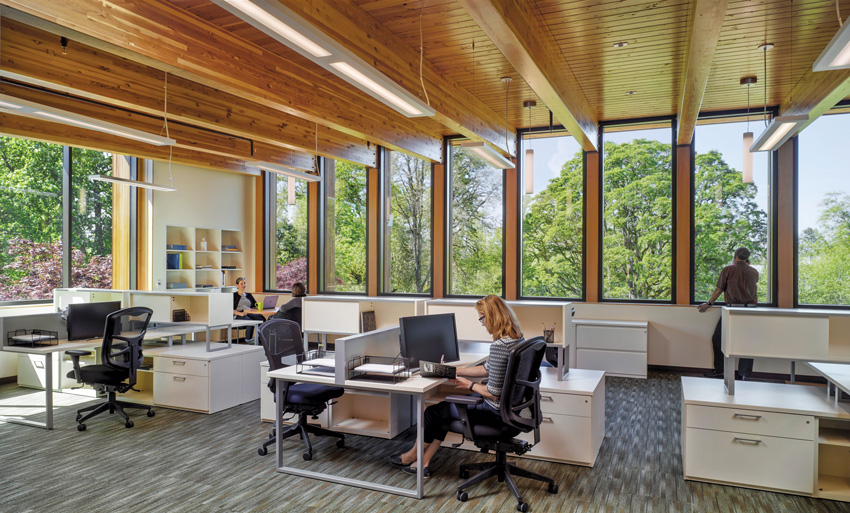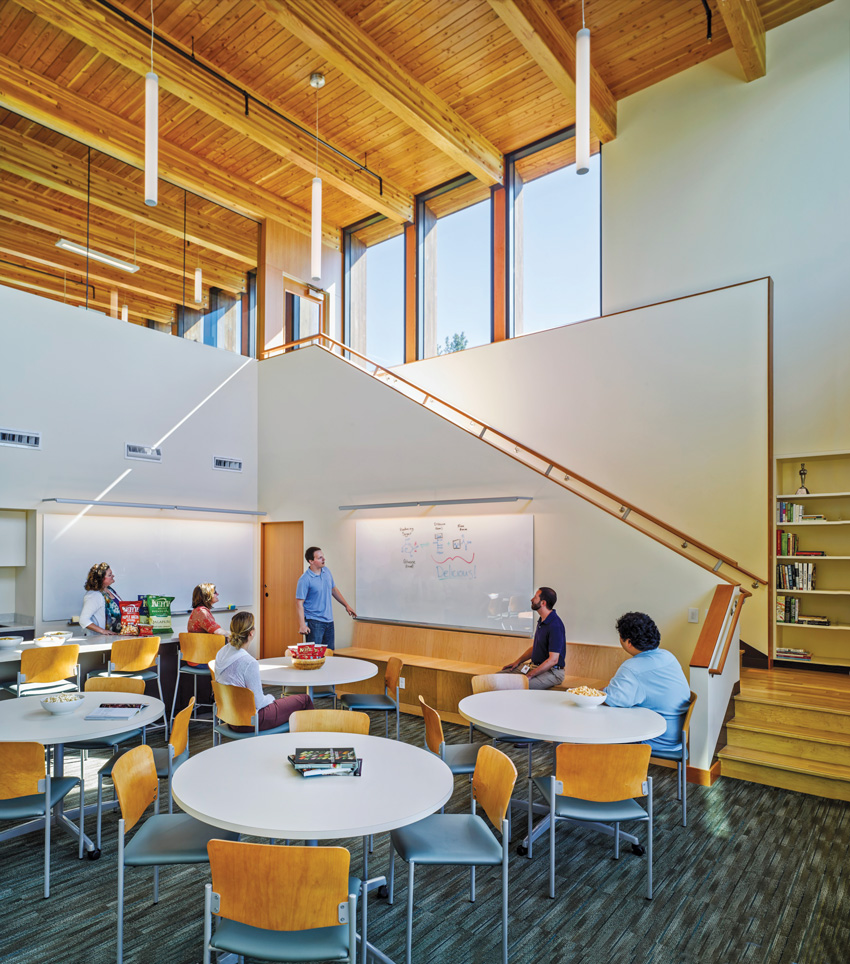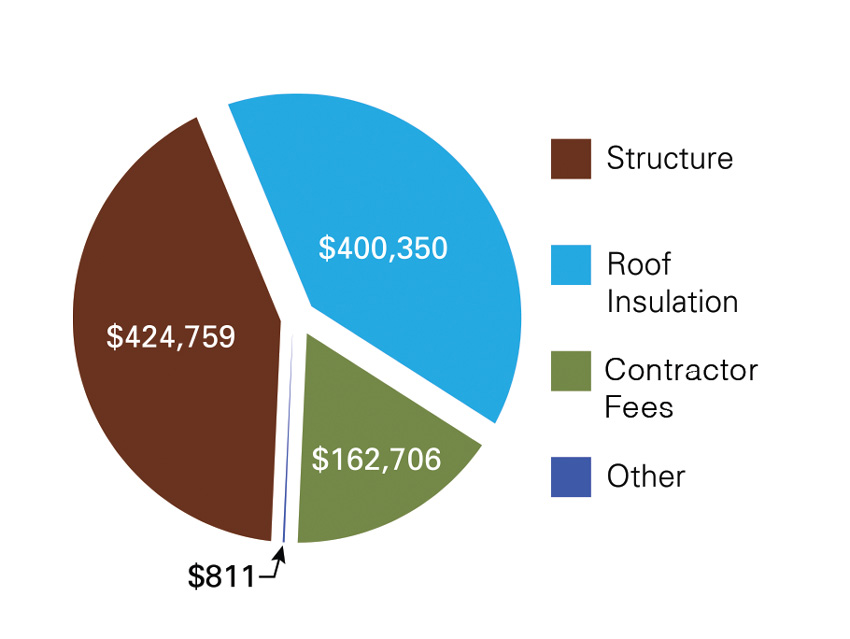Opportunities For Wood in Low-Rise Commercial Buildings
Construction Type and Cost
Under the IBC, most low-rise commercial buildings fall under one of the following occupancy groups:
- Assembly (Group A-2): Nightclubs, restaurants, taverns, bars
- Business (Group B): Banks, barber and beauty shops, dry cleaning and laundries, professional services
- Mercantile (Group M): Department stores, drug stores, markets, motor fuel-dispensing facilities, retail or wholesale stores, sales rooms
For these (and other) occupancy groups, structural wood framing is permitted in Construction Types IIIA, IIIB, IV, VA, and VB. The IBC specifies allowable height and area for each, and each has different requirements, largely related to fire protection. As shown in Figures 1–3, which highlight information from the International Code Council (ICC) Building Valuation Data, August 2015, the average cost for each construction type also varies widely.
Figure 2 highlights the difference in cost between two construction types commonly used for low-rise commercial buildings—Type IIA, which doesn’t allow structural wood framing, and Type IIIA, which is typically wood-frame. Both have similar allowable heights and building limitations, but the average Type IIIA building costs $16 to $22 per square foot less.
In Figure 3, Type IIB Construction is compared to Type VA—also commonly wood-frame—and shows an even larger savings of $24 or more per square foot for the wood building. Allowable heights and areas remain similar, with exceptions that include greater height for Type VA Assembly and Mercantile occupancies, and greater height for Type IIB Education and Business occupancies.
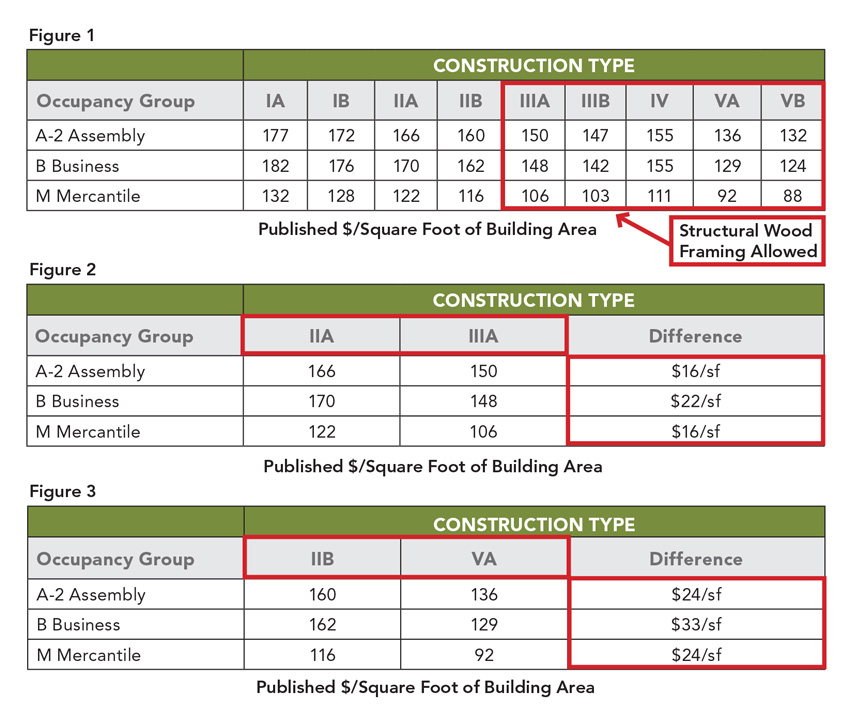
Source: ICC Building Valuation Data, August 2015
Heights and Areas
One of the changes in the 2015 IBC compared to the 2012 version is a restructuring of the section on heights and areas. The equations are simpler, but there are more of them, along with more tables that are also larger and more complex. Among the specific changes there are separate tables for allowable heights (IBC Table 504.3) and allowable stories (IBC Table 504.4), with results based on occupancy classification, construction type, and whether the project is sprinklered.
Although Types IV and V may be more appropriate depending on the objectives of a project, architects interested in choosing wood structures should be aware that almost any low-rise commercial building can be designed in wood using the Type III designation. For common low-rise commercial and mixed-use occupancies (Assembly, Mercantile, Business, and Residential), Type II and Type III Construction in IBC 2012 and 2015 have equal building height and story limits.
Opportunities for Unlimited Area
To determine allowable height and area, many designers look to the IBC tables covering occupancy versus construction type (IBC Table 506.2) and use the equations to determine the tabulated limits for their buildings. Sometimes overlooked is the fact that commercial projects of Type III, IV, and V Construction—including Assembly, Education, Business, Factory, Mercantile, and Storage Occupancies—may qualify for unlimited area in IBC Section 507. This is because of the open space that often surrounds commercial projects, such as parking lots and major roadways, which, in addition to sprinkler protection, increases safety by providing firefighting access to multiple sides of the building.
The typical baseline requirement is 60 feet or more of open space on all four sides. However, a project may still qualify for unlimited area if a portion of the building has as little as 40 feet of open space—if the exterior walls and openings on the side with the reduced frontage have a 3-hour fire-resistance rating.
Where a project includes multiple buildings that are less than 40 feet apart—such as a group of offices or retail stores—the IBC allows them to be considered as a single building for the purpose of determining whether unlimited area applies, providing they have 60 feet of open space around them, and provided they would all otherwise qualify for unlimited area.
Two-story buildings of Business, Factory, Mercantile, and Storage occupancies of any construction type can have unlimited area providing they have the required surrounding open space and are equipped with a National Fire Protection Association (NFPA) 13-compliant automatic sprinkler system (IBC Section 507.5). Additional allowances for Assembly occupancies related to unlimited area buildings can be found in IBC Sections 507.4 and 507.7.
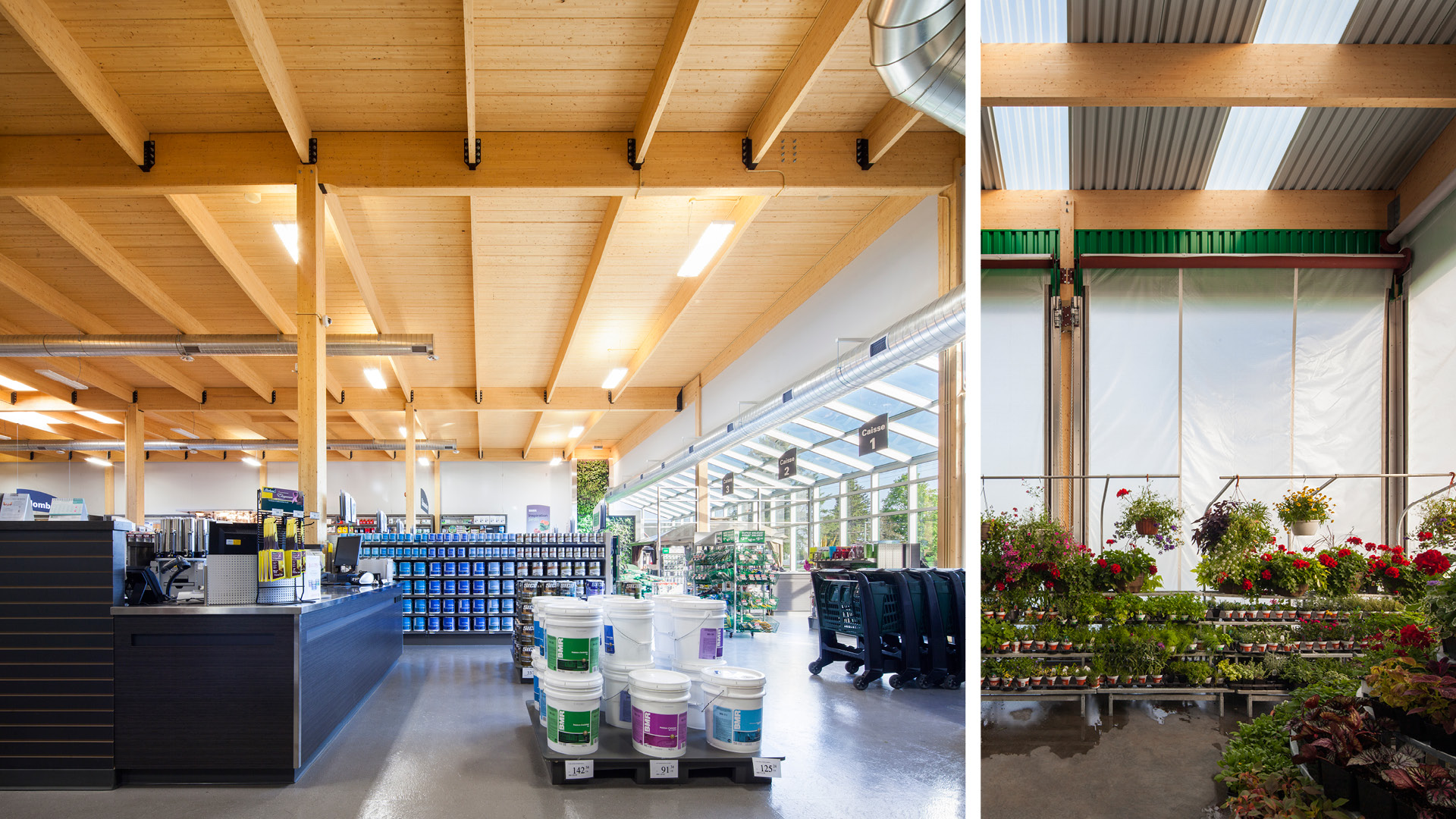
BMR/ECO ATTITUDE STORE CONCEPT
Locations: Saint-André-Avelin, Sainte-Agathe-des-Monts, Saint-Jean-sur-Richelieu, Québec
Architect: Sophie Tétrault Architecte
Engineers: Rochon Experts-conseils S.I.M. Experts-Conseils AP Consultant
Founded in 1967 by a group of Quebecois building supply dealers, BMR seeks to incorporate regional materials into its member stores. Wood reflects the company’s heritage while its natural warmth enhances clients’ shopping experience. In addition to providing a more energy-efficient structure, an article in Les Affaires acknowledges sales increases attributable to the wood structure.





